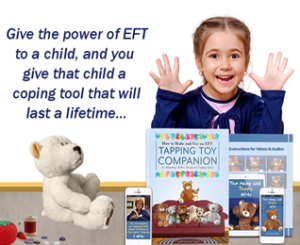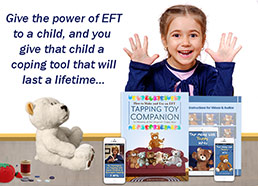Kinney is tall for 13. He has light brown hair and a pair of sad eyes that competed for the saddest I’ve ever seen. He expressed immediate interest: “Can you teach me?”
“Sure.”
“Harvey,” a slender, African American nine year old in perpetual motion, was in line behind him: I want to know too.
“OK.”
“Ryan,” 11, one of those absolutely adorable blond headed, blue-eyed children with impeccable manners – very RARE for our agency – spoke next. “Ma’m, if you wouldn’t mind, I’d like to learn about that too.” “No problem,” I said, “I’ll teach all three of you after supper.”
When I returned to the unit the three boys immediately came up to me. “Teach me now,” said Ryan. We sat down on the couches and I told them that what we were going to learn was something that calmed people down very quickly most of the time–that it sometimes worked better when you worked with someone else but that it was something they could use for themselves, by themselves.
I said this really makes use of things we already do to make ourselves feel better but using this process we can focus what we do and make it work much better. Showing them as I went, I then asked if they had done any of the following: Palm to head, hand to chest, head in hands, rubbing under eye and under nose, wringing hands, chewing on fingers, rubbing back of hand. They all nodded. Harvey, Mr. Perpetual Motion, started showing everyone how he bites his nails!
ANN CONTINUES: I told them this is a way to use all those motions together while thinking about what they were upset about. And that most of the time it made the upset feelings better and lots of times the bad feelings were just gone. I had their attention – well, except Harvey – who had changed seats already five times. I decided to try the Cook’s Hook Up exercise to see if it would quiet him. He could not even hold his hands together long enough to follow the instructions. He wandered off – ah well, another day.
I asked Ryan and Kinney if anything had happened to upset them today. Neither could think of anything. This is often the case when I teach it to kids ‘cold’. My primary goal is to familiarize them with the process. Many times, the next interaction I have with them is: “Hey Miss Ann, will you do the tapping stuff with me. I’m mad/upset/sad.”
Harvey then wanders back and grabs at Ryan’s arm. Ryan shoves him away angrily saying to me: “Yeah, I got a problem; peers that provoke me. I get frustrated.” [We teach a whole new lexicon to young children: peers provoke, boundaries, negativity, levels, color drops, etc.]
Kinney also says he has a problem. “You don’t have to tell me, but do you want to share it?” I said. Kinney then tells me a very sad story of a mom in jail for drugs and how worried he is about her and that she also has ulcer problems and that he misses her. [There are many, many such sad stories in our residential facility. Wish I could teach all the moms and dads how to tap!]
I explained how problems were like puzzles and that puzzles have a lot of pieces. That the first step was to think about your problem and then pick what piece of it you want to work on. Then, when that piece of the problem was fixed you would pick another piece until all the bad feelings were gone.
I told Kinney that his problem had a lot of pieces. He would need to tap for a lot of pieces of this problem. We talked about what his pieces might be. I said we also feel our problems physically in our body and when we were thinking about what piece of the puzzle we wanted to work on it helped to check out where we feel that feeling in our body. His hand went straight to his heart.
We talked about how to figure out how much the problem bothers them. I showed them the arms outstretched method, counting from 10 to 0 as I moved my arms in to the prayer position.
Harvey wanders back into the group and sits. Lisa, an old hand at tapping comes to watch and adds her two cents: “I’ve done this, too.”
“Hi, Lisa, yes you have. Does it work?” “Yeah,” says Lisa. “I like it.”
“Well, you pick a problem you want to work on with us.”
“Let’s do it,” I said to the group. We tapped the side of the hand with simple set ups: “Even though I am sad about my mom/angry about my peer provoking me, I am a good kid.” I modeled each point. We used the finger points, too. I skipped the nine gamuts. We repeated the steps.
Harvey tries to tap but gets bored and leaves again. [It takes several times to get a child like Harvey through the entire process.] Lisa says: “You didn’t tap the gamut spot.” She tells Kinney; “That’s a good point for depression.” [As a child learns more about the process one of the things I do is to label each point with a feeling. [Dr. John Diamond’s thing. Who knows if that is accurate but the kids like it!]
Melanie comes to join us. “You are doing that tapping stuff!”
“Yeah. You used it lately?” “No,” Melanie says, “I forgot.”
I smiled at her and said “It’s great stuff; we’ll go over it again.” Kris comes up and sits down. I smiled at him as he started tapping the side of his hand – “See,” he said.
I asked Ryan if the tapping fixed his being “frustrated at being provoked by my peer.” He nods and smiles: “Harvey’s just being stupid.”
I looked at Kinney: “Did it help any?” “Well,” he said, “I am not upset about it right now.”
“Tell me again which spot is for depression?” He looked into my eyes with such sadness mixed with hope that I wished I had been able to work with him individually longer.
One of the downsides of being the campus director is that I actually have little time with any one child. I work with a child in need and teach as many as I can. I have classes with the staff once a quarter and work with them to reinforce the children using the process. I teach the children EFT in groups not only because of my time constraints but also because it normalizes the process for the children to see other children tapping.
Ryan asks if I can write the steps down for him. Usually I have to suggest that! Since each child has a journal, I sent them to get their journal from their room. They did. In the six small journals of the six small children we wrote:
1. Think about your problem.
2. Pick one piece you want to work on.
3. Tap the side of your hand. Etc.
I usually end the finger points with tapping the side of the hand again and then the gamut spot. Why? No scientific reason, not even a good clinical reason.
Surprisingly, even Harvey brought his journal and actually sat there as I helped him write the steps. Each child either wrote the steps or asked me to. Ryan said: “What should I call it?”
“What would you like to call it?”
“I’ll call it Ryan’s Thinking Process,” he said.
Update: I saw Kinney at lunch the next day. He told me he had started getting depressed last night so he tried the tapping. “It really works!” He told me with surprise in his voice.
Ann Adams







